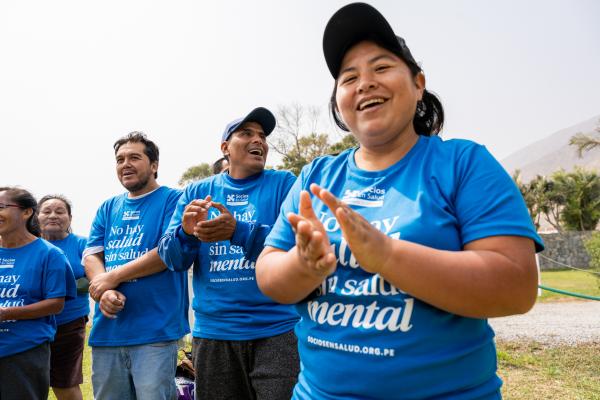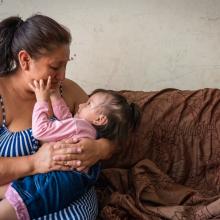The community care model of Socios En Salud seeks to strengthen the health system through activities that bring timely, equitable and quality medical care to the most vulnerable communities. Thanks to various partnerships, we bring people closer to health facilities and accompany them during their treatment.
Proof of this is the Many Voices project, of the Mental Health Program (SAME), in which, through community strategies aimed at accompanying and rehabilitating people living with schizophrenia (PVE), it was achieved that 99% of the beneficiaries achieve greater adherence to treatment.
In 2019, this initiative began its interventions with the Carabayllo Community Mental Health Center (CSMC). Later, our community model of care was expanded to other similar facilities to strengthen the activities that the Ministry of Health carries out through the Continuity of Care and Rehabilitation Program.
“Currently, there are 307 people living with schizophrenia who are being followed up (by the project’s community agents), of whom 306 are adherent to treatment,” says Milagros Tapia, coordinator of Many Voices.
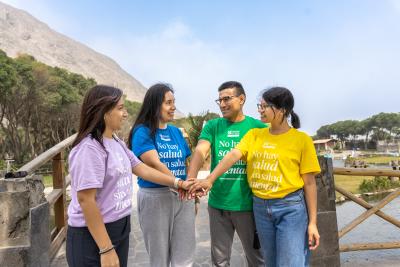
Milagros Tapia, Stephani Zegarra, Roli Marin y Adriana Sánchez, del equipo del Programa Salud Mental, unen fuerzas para conseguir una mayor adherencia al tratamiento de los beneficiarios del proyecto Many Voices.
Foto por Diego Díaz / SES
Evaluation and follow-up, key points in the model
How do you know that a person with schizophrenia is adherent to treatment? Prior to the start of the Many Voices intervention, the beneficiary undergoes a test of “four dichotomous-choice questions” at the community mental health center that corresponds to him or her, Tapia explains. Such tests will allow “adherence” to be measured later.
After the evaluation, the project assigns previously trained community agents to follow up with each person. “They verify whether they take their medications, or if they stopped taking them for some reason,” Tapia says. This information is recorded on a card, where “other difficulties,” if any, are also noted.
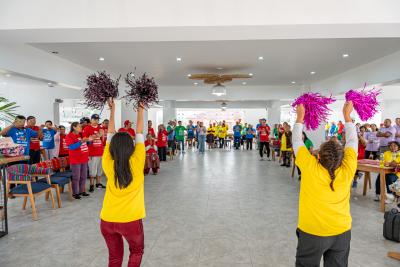
Juegos, canto y mucha unión se pudo ver en la clausura del Currículum de Rehabilitación, encuentro realizado el pasado mes de abril que reunió a los beneficiarios de Many Voices junto con sus familiares y cuidadores.
Foto por Diego Díaz / SES
Thus, each community agent visits the homes of people living with schizophrenia twice a week. In addition to their surveillance work, they also provide education and guidance, as they provide mental health education (if needed) and link beneficiaries or their caregivers to the health facility if they have any comorbidity.
They also support the families of people with schizophrenia in the management of documents to obtain a National Identity Card (DNI) or enrollment in the Comprehensive Health System (SIS). “We do not work alone, but hand in hand with the Programa de Protección Social de Socios En Salud,” highlights Tapia.
A model that makes a difference
Alberto Gamarra (43) is one of the people living with schizophrenia who belongs to Many Voices. His mother, Milka Asis, says the community accompaniment model has been important for her son “to be able to socialize.”
Despite his “friendly” nature, the stigma and discrimination against his mental condition did not allow him to form close friendships with other people. But Assisi says his encounters with like-minded people have sparked his interest in “having friendships.”
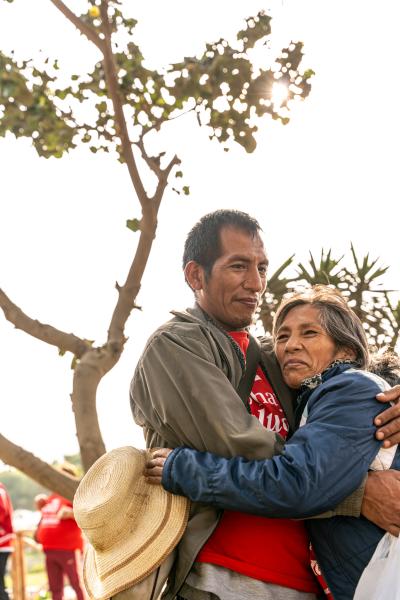
Alberto Gamarra, persona viviendo con esquizofrenia que pertenece a Many Voices, abraza a su madre Milka Asís, quien ha resaltado lo mucho que el proyecto ha ayudado a su hijo a socializar.
Foto por Diego Díaz / SES
A similar reaction is found in Dionila Jiménez’s mother, Agustina Dionila (64). For her, the accompaniment “has been necessary and indispensable.” “Now that (my mom) has been following her treatment, she has met people and has been able to get around more,” she says.
“This project has been good, and it is good, and I hope it continues,” says Julio, who cares for his mother, a Many Voices beneficiary. “The activities keep her active, going to her group to socialize with workshops, therapy and taking her medication,” he adds.
Your donation makes a difference. Click here and help us bring the cure against social injustice to more communities.
